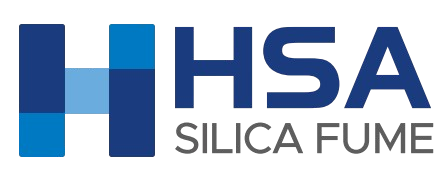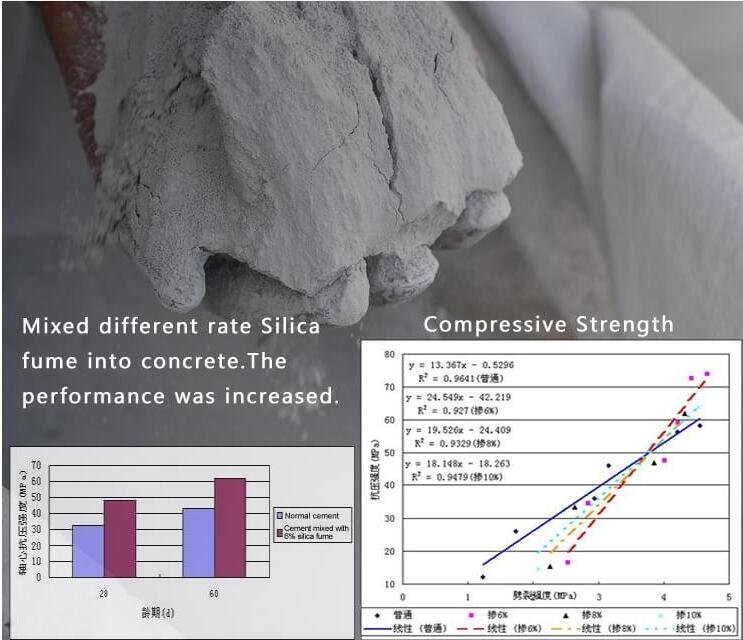The Indian silica fume market has been experiencing steady growth, driven by robust infrastructure investment, rapid urbanization, and expanding demand for high-performance concrete. As construction output in India is projected to grow at a CAGR of 9.6% to reach INR 36.58 trillion by 2028, the demand for supplemental cementitious materials like silica fume is rising in tandem. Forecasts indicate the market will expand by USD 15.56 million during 2025–2028 at a CAGR of 5.6%, underscoring both the maturity and resilience of this segment. Key drivers include large-scale government programs—such as the Smart Cities Mission, Bharatmala Pariyojana, and PMAY—that are fueling demand for durable, long-lasting concrete structures, while applications in precast, shotcrete, and self-compacting concrete propel end-use growth. Challenges remain in the form of price volatility, health and safety concerns during handling, and competition from alternative pozzolans, but innovation and expanding domestic production capacity promise continued market expansion.
Market Overview
The silica fume market in India is currently valued at several tens of millions of U.S. dollars, with forecasts projecting an additional USD 15.56 million market expansion between 2023 and 2028, reflecting a compound annual growth rate (CAGR) of 5.6%. This growth trajectory aligns with the broader building materials market, which in 2023 stood at USD 90 billion for construction materials and is supported by ambitious infrastructure plans and affordable housing initiatives. Major producing regions include Maharashtra, Gujarat, and Tamil Nadu, supported by both indigenous silicon metal smelters and importers of higher-purity grades.
Historical Context
Silica fume was first introduced in Indian construction during the late 1990s as an additive for high-strength concrete, gaining traction in precast concrete and shotcrete applications in metro rail projects and tunnels. Over the past decade, consumption rose steadily, paralleling the growth of the self-compacting concrete segment, which alone contributed to significant volume uptake in urban high-rise and infrastructure projects.
Forecast and Outlook
Looking ahead, industry analysts project that demand will continue to grow at around 5–6% per annum through 2028, driven by the expanding highway network under Bharatmala, port modernization via Sagarmala, and urban redevelopment under the Smart Cities Mission. Forecasts by 6Wresearch also anticipate sustained volume increases through 2031 as India pursues its National Infrastructure Pipeline goals .
Key Market Drivers
Infrastructure Development
India’s Union Budget has consistently prioritized infrastructure spending, leading to a projected construction output CAGR of 9.6% during 2024–2028 and an expected value of INR 36.58 trillion by 2028. Such massive investment in roads, bridges, ports, and metro corridors elevates the need for durable concrete mixtures, with silica fume offering enhanced strength and reduced permeability.
Urbanization and Housing
Rapid urbanization—where over one-third of India’s population now resides in cities—has fueled a housing shortage. Affordable housing schemes like PMAY sanction millions of dwelling units, many of which utilize precast and self-compacting concrete that benefits from silica fume’s performance properties.
Performance Concrete Trends
Demand for high-performance concrete with superior durability, chemical resistance, and control of alkali-silica reactions has positioned silica fume as a preferred pozzolanic additive. Studies show that 5–10% silica fume replacement boosts compressive strength by up to 20% and dramatically improves resistance to chloride ingress.
Primary Applications
High-Performance and Structural Concrete
Silica fume is widely used to produce high-performance concrete for critical infrastructure like tunnel linings, bridge decks, and hydraulic structures, thanks to its ability to fill micro-voids and refine pore structure.
Precast and Self-Compacting Concrete
In precast factories, where rapid turnaround and high early strengths are essential, silica fume accelerates strength gain and enhances surface finish, critical for aesthetic elements and thin-wall sections. The self-compacting concrete sector, particularly in urban high-rise projects, benefits from improved flowability and segregation resistance imparted by fine pozzolans.
Shotcrete and Specialized Infrastructure
Shotcrete applications in mining, tunneling, and slope stabilization leverage silica fume to achieve dense, adherent linings with minimal rebound loss, improving construction speed and safety.
Competitive Landscape and Major Players
Key domestic and international players shaping the Indian market include Adinath Industries, Astrra Chemicals, BanFam Merchants, Choice Organochem, Elkem ASA, GoGreen Products, Guru Corp., Nikunj Chemicals, Refsteel Solutions, Sika AG, Wacker Chemie, and Xetex Industries. These vendors compete on product purity, particle size distribution, supply chain integration, and technical support services.
Domestic Capacity and Imports
While India hosts several small- to medium-scale silica fume manufacturers, bulk supply often relies on imports of high-purity grades (≥95% SiO₂) from countries like China and Norway, especially for specialty applications. Domestic expansion plans are underway to reduce import dependence and improve margins.
Market Challenges
High Raw Material and Processing Costs: Silica fume production involves capturing by-product fumes from silicon metal furnaces, making supply vulnerable to silicon metal price fluctuations.
Health and Safety Concerns: Fine respirable dust requires strict handling measures and personal protective equipment, raising operational costs and compliance obligations.
Competition from Alternatives: Fly ash, blast furnace slag, and calcined clays offer cost-competitive pozzolanic performance, pressuring silica fume pricing.
Opportunities and Future Trends
Green Construction and Sustainability: Silica fume’s ability to reduce cement consumption aligns with carbon reduction goals, making it integral to “green” building certifications such as GRIHA and IGBC.
Value-Added Blends and Admixtures: Integrated packaging with superplasticizers and viscosity modifiers can unlock new performance standards, especially in 3D concrete printing and ultra-high performance concrete (UHPC).
Regional Infrastructure Projects: The Mumbai–Ahmedabad High-Speed Rail Corridor and multiple metro expansions will require specialized concrete mixes, offering niche growth avenues.
Conclusion
The Indian silica fume market stands at a pivotal growth juncture, underpinned by strong macro-economic drivers, evolving performance concrete demands, and sustained infrastructure investments. While challenges around cost, safety, and substitute materials persist, innovation in product formulation and expanding domestic capacity are set to reinforce silica fume’s role in shaping India’s built environment.
Henan Superior Abrasives (HSA) is one of China’s leading silica fume manufacturers, offering products with SiO₂ content up to 99% and tailored particle size distributions for a variety of concrete applications. With global supply expertise, HSA ensures consistent quality, competitive pricing, and responsive technical support.
Ready to enhance your concrete performance with premium silica fume?
Contact Henan Superior Abrasives today to request a sample, discuss technical specifications, and explore bulk supply options.
- Email: sales@superior-abrasives.com
- WhatsApp: +86-18638638803



